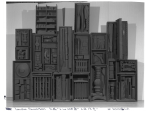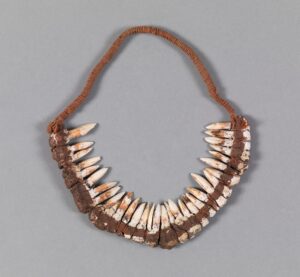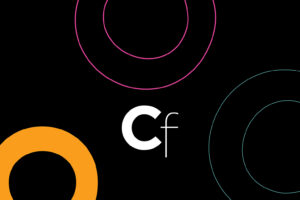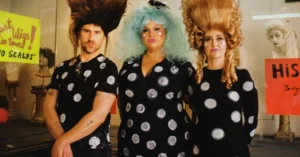Pace Gallery’s New Berlin Space Is a Measured Approach to International Expansion

Last Thursday, just ahead of this year’s Gallery Weekend Berlin, art-world revelers gathered in a converted 1950s gas station, dubbed Die Tankstelle, in the capital city’s Schöneberg neighborhood. The spot is well-known to locals, less for filling up on gas, than for art. Until recently, it was a museum dedicated to German artist George Grosz. But as of this month it is the new shared space for megadealer Pace Gallery and a hometown shop, Judin Gallery.
As part of the partnership, Pace rents out half of the Die Tankstelle from Judin founder Juerg Judin, who has owned it since 2005, with the two companies sharing the costs of running the space. (The galleries declined to disclose the specific financials of the arrangement.) For its inauguration, Judin is exhibiting works on paper by Tom of Finland in the downstairs space; upstairs, Pace is showing works on paper by Jean Dubuffet, Jean-Michel Basquiat, and Robert Nava. After this debut, the galleries will alternate between shows, with each mounting about three per year.
The collaboration, and the quirky space itself—with its narrow, rectangular forms reminiscent of shipping containers—doesn’t feel like the grand commercial and architectural gestures one might expect from the likes of Pace, which operates in seven international cities. But the project does fit in with Berlin and its changing art landscape.
“In the future, galleries have to collaborate more, not less, to also get through the difficulties that we have now. We have a changing world, a changing market,” Judin told ARTnews during the May 1 opening preview. “Cost-cutting was not at the core of this project,” to work with Pace, said art historian and co-owner of Judin Gallery, Pay Matthis Karstens. “It’s a journey to see where our joint strengths and paths can lead.”

The main exhibition space of this new Pace-Judin venture measures 3,200 square feet, across two stories, and adjacent to this is a café and bookshop. To distinguish the former gas station from its past life, Judin commissioned architect Guido Hager to landscape the outdoor courtyard into a peaceful garden with a gurgling fountain and pond that was completed by 2008, becoming the dealer’s personal residence for several years. To “survive” downcycles in the market, amplified by Trump tariffs and geopolitical turmoil, “you can either withdraw into your own, little shell, or you can open up,” Judin said. And while most in the art world were fairly “territorial,” he offered that Pace CEO Marc Glimcher and himself were not. Glimcher, who paused to high-five his Berlin-based senior director Laura Attanasio, said he agreed.
Asked about the decision to open in Berlin, Glimcher said it evolved naturally from his long-standing friendship with Judin. “Everybody wants to know what our strategy is—I don’t know! It just happened,” he said, clarifying that the gallery had been actively looking for a suitable office for Attanasio with a viewing room. But since some eight of the gallery’s artists are based in Berlin—including Alicja Kwade, Nina Katchadourian, and painter Adrian Ghenie, who is co-represented by Judin and Pace—it made sense to open a full-fledged exhibition space.
“Berlin is like a transfusion, if you’re in the art world,” Glimcher added.

A Changing City
Berlin itself has been going through a tumultuous period, as costs of living rise and younger, less established artists don’t have the free terrain—and incredibly cheap rent—that has defined the city’s alternative, open-to-all arts scene for the decades since the fall of the Berlin Wall. Even more grave, government funding for the arts has been slashed by €130 million (about $147 million), leading to the resignation of the city’s senator for culture, Joe Chialo, last week, with more cuts expected in future. Meanwhile, the Israel-Palestine conflict has deeply divided the city’s art scene.
Attanasio said that doesn’t mean “giving up on the city, just because we’re running into some difficult times. Berlin was—and still is—on everyone’s radar.”
Pace chief curator Oliver Shultz added, “Berlin still feels very much defined by its voids and its openness … even as those voids have been filled up over the last 10–15 years, you can still sense this disruptive energy. There’s still space for us.” Antonia Ruder, director of Gallery Weekend Berlin (GWB), held a similar line of defense. Because Berlin lacks a major art fair, she has tried to draw a broader and more international crowd to GWB, the city’s main art-selling event. As part of her strategy, she has introduced new programs including talks in collaboration with Neue Nationalgalerie, a podcast with artists, curated tours, and studio visits. She noted that Berlin is still artist-centered, unlike other, similarly large art hubs. “But in recent years, galleries have become more internationally connected, and there’s a growing effort to strengthen the local market without compromising the city’s spirit,” she told ARTnews in an email.

Much of that spirit was palpable during this past weekend, chock-full of gallery, institutional, and pop-up events around town. Artist Olafur Eliasson tried to manage a long, snaking line of visitors to his show-stopping exhibition, “The lure of looking through a polarized window of opportunities, or seeing a surprise before it’s reduced, split, and then further reduced,” at neugerriemschneider (through August 9). When it started to rain, he pleaded with a gallery worker to hand out umbrellas to everyone waiting to enter.
At the neugerriemschneider’s second space, Thomas Bayrle held court amid his bustling exhibition featuring historic and new work, highlighting his visionary use of technology in art across several decades. “Sometimes I have doubts, but then, I just keep going,” he told ARTnews.

Gallery weekends can tend to be hit or miss, which can be a drag to visitors who have to trek across a given city. But Berlin’s event offers an unusual amount of hits. They range from Sun Yitian’s compelling solo at Esther Schipper, cloaked in dim lighting and entered through a curtain; to a museum-like exhibition of French self-taught painter Camille Bombois (1883–1970) in dialogue with contemporary artists, at Judin’s other Berlin space; to a poignant solo for late artist David Medalla, presented by Mountains gallery, of his iconic “Bubble Machine,” as well as neon sculptures and paintings. (It’s worth noting that Mountains Gallery, like many experimental initiatives around the city, is not part of the official GWB program.)
The city’s institutions also tend to feature their important spring exhibitions during GWB. The theatrically displayed work of maverick artist and opera singer Semiha Berksoy (1910–2004), at the Hamburger Bahnhof National Gallery of Contemporary Art, is a knockout. On view are her raw, expressive portraits with almost mystic symbolism, including characters from her opera performances, which are displayed dramatically as if for the stage.

A new space, at Neue Nationalgalerie, dedicated to Christoph Schlingensief’s Sinking Germany (1999), offers a laugh. The filmed “action” shows Schlingensief, dressed as an Orthodox Jew, dumping an urn full of the “ashes of Germany” and a suitcase of common German objects, into New York’s Hudson River as he plays classical German music on a boombox. It feels just as relevant to watch today.
In the galleries and museums, Berlin’s characteristic irreverence as a leading European art hub can still be felt now, but GWB’s Ruder said there does exist a unique “tension” in the city’s “co-existence of commercial ambition with a strong non-commercial, artist-led foundation.” Nonetheless, she sees “real potential” here, especially given the city’s relatively small but formidable mix of established and emerging collectors.

On that note, Pace’s new gallery, according to senior director Attanasio, is the perfect response to the changing desires of the next generation of collectors. “New buyers want a different surrounding when buying art,” she said. “They don’t want to enter a white cube. They want another experience—a social, communal space that they’re part of.”
The Die Tankstelle “is a location that you probably won’t find anywhere else but Berlin,” local collector Filip Dames, 41, told ARTnews. “It’s a bit of an unorthodox set-up with the shared space.” He noted that the collaboration is also pragmatic as other galleries in recent years have been “spending way too fast, and taking on huge real-estate projects that also probably didn’t really make sense from a financial point of view, and it’s also why, today, a lot of these galleries are struggling.”
The recent government cuts to the arts, Dames said, are “short-sighted” as they underestimate “the one thing that Berlin stands out for: its culture.” He added, “Berlin needs these types of events.”




